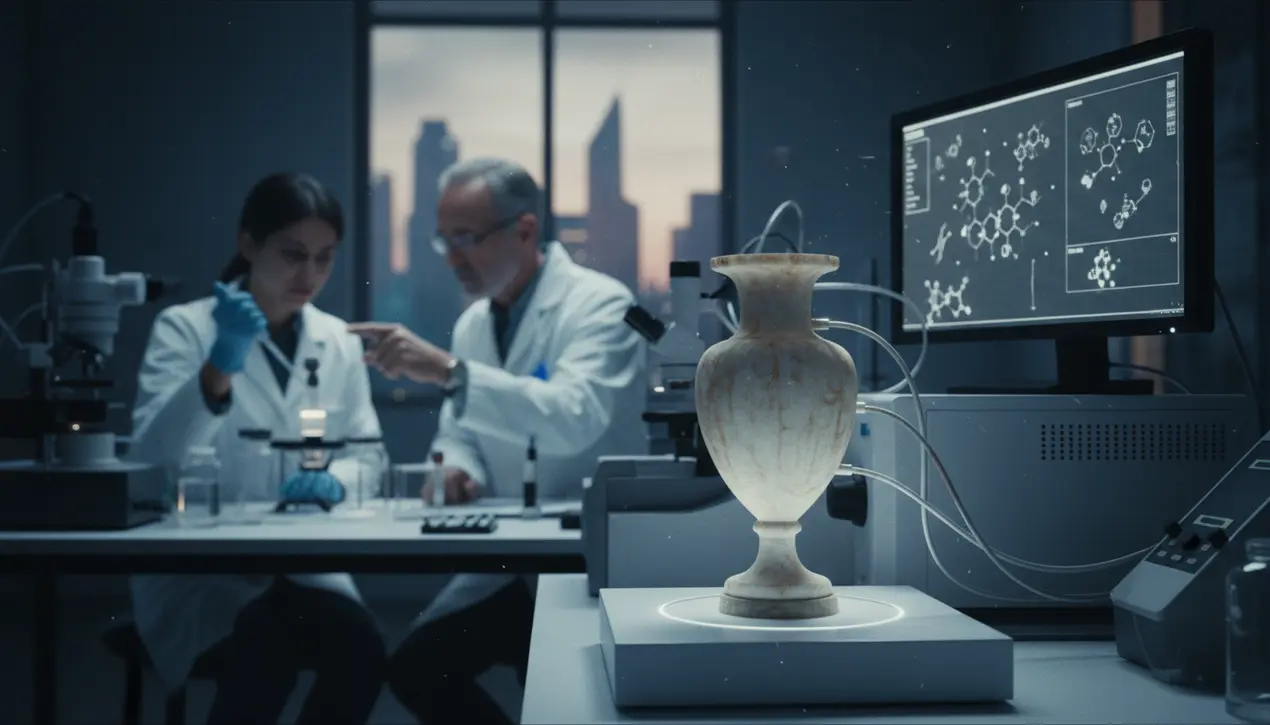
SciencearchaeologyArtifacts and Preservation
Ancient Egyptian Vase Shows Evidence of Opium Use.
KE
Kevin White
2 hours ago7 min read
In a stunning piece of scientific detective work that bridges the ancient world with cutting-edge biotechnology, researchers have confirmed that a 2,500-year-old Egyptian alabaster vase contains residue of opium, a discovery that fundamentally rewrites our understanding of ancient pharmacology and ritual. The analysis, which identified well-known diagnostic biomarkers for the narcotic substance, was performed on organic residue trapped within the vessel's porous stone, a time capsule preserving a chemical signature for millennia.This isn't merely an archaeological curiosity; it's a profound data point in the long, intertwined history of humanity and psychoactive plants, a narrative now being decoded with tools like mass spectrometry that were unimaginable to the civilization that used this very artifact. The specific type of vase, known as a 'Base-Ring' juglet, has long been theorized by scholars to resemble an inverted poppy seed pod, its very form a clever, symbolic container for its contents, suggesting a sophisticated level of botanical knowledge and intentional design in Ancient Egyptian material culture.The implications ripple outwards, forcing a re-evaluation of Egyptian medical practices, religious ceremonies, and even trade networks; opium was not native to the Nile Valley, meaning its presence indicates established, long-distance trade routes, possibly with Cyprus where such vessels originated, bringing this powerful compound into the hands of priests and physicians. One can envision its use in complex medical preparations, as documented in the Ebers Papyrus, potentially as an analgesic for severe pain or as a sedative, or its role in the cult of the dead, administered to ease the transition to the afterlife or to induce visionary states for oracles.This discovery operates like a CRISPR edit to our historical genome, snipping out old assumptions and inserting a new sequence of understanding about how ancient societies actively engaged with their neurochemistry. It places the Egyptians squarely at the forefront of early neuropharmacology, not as superstitious primitives, but as empirical experimenters leveraging their environment.The methodology itself is a testament to modern science: the ability to extract a molecular story without destroying the artifact, a non-invasive biopsy on history. As we stand on the cusp of a new era of bio-enhancement and smart drugs, this ancient vase serves as a powerful reminder that the human drive to alter consciousness and manage suffering is a deeply rooted, technologically sophisticated pursuit that has been evolving for thousands of years, connecting the priest in Thebes to the lab-coated researcher of today in a continuous quest to unlock the secrets held within nature's most potent chemistry.
#archaeology
#ancient egypt
#opium
#drug use
#alabaster vase
#residue analysis
#featured
Stay Informed. Act Smarter.
Get weekly highlights, major headlines, and expert insights — then put your knowledge to work in our live prediction markets.
Comments
Loading comments...
© 2025 Outpoll Service LTD. All rights reserved.